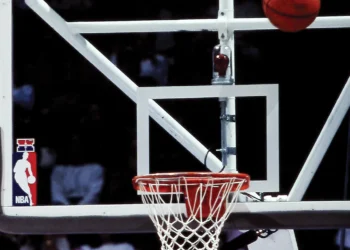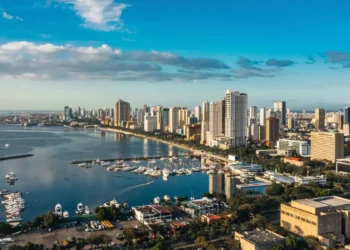Recession-proof no more, the casino industry is having to adjust… cutting costs, in most cases, but in others, looking to spend
If gambling is entertainment, where does it fall in the pecking order of consumer priorities? Is it before or after a new flat-screen TV? In tough times, where do cash-strapped managers—or, these days, CFOs—target their marketing? What if the decision comes down to a few dozen of the latest slots versus a refurbished buffet?
As casino executives wade through what looks to be a sustained and ravaging recession, most are faced with an environment they have never lived through. High-end Las Vegas Strip properties are nervously dealing with mounting vacancy rates and slashed room rates. Once-a-week customers at smaller, locals-based gaming halls are becoming once-a-month visitors. The rivers of cash flowing through tribal casinos across the United States have slowed to stream levels.
From card rooms to small slots houses to megaresorts, from California to Connecticut, the gaming industry, once thought to be “recession-proof” is showing itself to be what it has long sought to be—on an even playing field with the rest of the American economy.
“I think it’s pretty safe to say that the old adage that gaming is recession-resistant has been blown out of the water,” said Robert LaFleur, an industry analyst with Susquehanna Financial Group. “On a broader scale, there’s the whole psychological issue of, for lack of a better term, the post-prosperity society, where we went through these multiple years of excess, and now we’re in a much more austere time where it’s all about paying down debt and personal deleveraging and simplifying lifestyles.”
Bill Eadington, director of the Institute for the Study of Gambling and Commercial Gaming at the University of Nevada, Reno, agrees. “The problem with this recession is that it is very extensive,” he said. “It has effects on every social class—whether it’s your 401(k) or the mortgage or you’re afraid of losing your job, or all of the above.”
It’s becoming a familiar sentiment. “The striking thing about the seemingly endless collapse of the subprime-mortgage market is how egalitarian it has been.” That is the first sentence of the introduction to “Panic! The Story of Modern Financial Insanity,” edited by Michael Lewis, best-selling author of “Liar’s Poker” and other books, published last month.
The fact that two well-known gaming experts, one in finance and one in academia, are discussing casino woes in the same terms as those of the national economy shows just how far the industry has evolved into the mainstream.
“It remains to be seen how weak the economy’s going to get,” LaFleur said. “The risk is that things like Las Vegas seem frivolous and decadent.”
The evidence for that has been overwhelming. For November 2008 (the latest figures available at press time from the Nevada Gaming Control Board), winnings at the 41 Strip casinos fell to a five-year low, down 16.2 percent from November 2007. The numbers are worse than they appear, though, given that the gross win for November 2007 was down 19.2 percent from November 2006. For all of Nevada, November’s win was down almost 15 percent from the year before.
Publicly traded gaming companies have been through the wringer for more than a year. Stock prices for the likes of MGM Mirage, Las Vegas Sands, Boyd Gaming and others have nosedived into the single digits from two-year highs ranging from $50 to $100 a share.
“Obviously the cash flow line … of these companies has been hit harder because of the negative leverage associated with the somewhat fixed-cost business,” said Andrew Zarnett, an analyst for Deutsche Bank in New York.
Was there a lingering notion among gaming companies, public and private, that the business was recession-proof, or did they just take advantage of lax credit markets like everyone else?
“I think it was both,” Zarnett said. “There was clearly a view that these businesses weren’t recessionary.”
That failure to account for the possibility of a major recession, along with too much capital spent on “oversized assets” means that debt—with a “significantly below-market cost of capital”—is the only asset that remains for publicly traded gaming companies, Zarnett wrote in a recent report: “Over the past three years, Las Vegas operators have spent over $6 billion investing in new projects. Our capital estimate includes 7,300 new rooms (Palazzo, Palms Place, Trump and Wynn Las Vegas). And that does not include the 18,000 rooms we estimate will come on line over the next two years”—a reference to the opening of CityCenter later this year, the planned Cosmopolitan and Fontainebleau openings, an expansion at Hard Rock, the opening this spring of M Resorts, an expansion at Planet Hollywood and the December 2008 opening of Wynn’s Encore.
Managing compression
In Las Vegas, the most obvious result of over-building, combined with a major downturn in consumer spending, has been drastically lowered room rates. Even Steve Wynn discounted rooms at Wynn Las Vegas and the new Encore to $149 and $159 a night, respectively, on certain days this winter. The compression downward on almost all properties has been swift: a room at Mandalay Bay for $115, MGM Grand at $75, Monte Carlo and New York-New York at $60, The Mirage at $94 (with a third night free), Luxor and Excalibur at $50 and $41. Free drinks, spa credits, two-for-one show tickets, discounted golf. Any $100-a-day gambler not asking for comps on the Strip this winter, it would appear, is being charitable to the house.
“The days of the $300 room, the $200 meal and the $100 show tickets are probably behind us,” said LaFleur. “This came down pretty fast. Right now the scramble is to just get the room prices at a level to keep bringing people there.”
The trend is plain to see with large companies like MGM Mirage, which break down the performance of each property—Bellagio is being booked at a discount, but holding its own, while Circus Circus is suffering.
“What happens is, it really comes off the bottom line,” said Eadington. “Hotel rooms are predominantly fixed-cost assets. Price wars on rooms have a disproportionate effect on the bottom line.”
Suppliers are feeling the pinch as well. Normally, in slow periods, operators can retrench and retool with new technology and other upgrades, waiting for the next up cycle. This time around, not so much.
“You have to replace slot machines as they wear out or become obsolete, but certainly if you are a highly leveraged company with extreme demand on your significantly diminished cash flow, there’s just simply not as much money available to spend,” said LaFleur. “Also, there aren’t going to be as many new casinos open to sell the slot machines into. In the past you could look at economic downturns as opportunities for gaming proliferation.”
Nowadays there are very few jurisdictions left for casinos to sprout and fewer racetracks to be transformed into racinos. Even where there are wide-open territories for gaming growth, such as in Kansas, plans have been abandoned in part because of tax rates that now are seen as onerous. Today’s high cost of capital, even assuming somewhat normal access to financing, makes operating in many new environments simply impossible.
Dennis Conrad, owner and chief strategist for Reno, Nev.-based Raving Consulting, says the industry still has its unique advantages, no matter how common casinos may become. “What’s interesting about gaming companies in a recession is they have an opportunity to try different models, unlike other businesses,” he said. “There are the people that are cruising, waiting for [the downturn] to end and keeping their expenses down, and then there are the people that whatever’s there they want it, it’s time to spend money. Then there’s the wisest approach, and that’s to take a good hard look at that 20 that drives the 80.”
Conrad is referring to the fact that for most properties it is usually 20 percent of players driving 80 percent of the business, and for some it might even be 10 and 90.
“The universal rule is to be loyal to your regulars, who tend to have discretionary income and are less likely to pull their horns in altogether,” he said. “They just like it too much.”
There are signs that the more sophisticated tribal casinos have already shifted toward Conrad’s way of thinking.
“They’re really shrinking, but where you see them not shrinking … is in their promotions to entice the regular gambler to come in, by offering them more money,” said Elijah Zuniga, a former special agent for the California Bureau of Gambling Control and now a consultant for California card rooms and tribal casinos. “They’re really shrinking and getting back down to the basics—high jackpots, offering rewards and promotions.”
That money, he said, is coming from expansions not undertaken, salaries not being paid to employees who have been laid off, contracts that have been cancelled and other capital-intensive areas that have been cut back.
“What’s interesting in California is you have an industry that arguably did not reach its maturity yet. A lot of the tribes that were doing very, very well in the first half of the decade probably were not very cost-conscious, and for the first time you’re seeing some of the tribes reducing employment and re-evaluating investment,” said Eadington.
“California kind of led the way with the economy getting hit,” said Lawrence Klatzkin, managing director and analyst at Jefferies & Co. in New York. “People’s budgets aren’t what they were. [Tribal gaming] is a new market that grew aggressively, and there’s a lot of competition, and it’s taking a hit. Think about it—five years ago, how many of those California casinos even existed?”
More ‘calculation’
So is it back to basics? Comped rooms and “locals nights” at a beefed-up buffet? Internet marketing? Billboards?
“The bar has been raised,” said Conrad. “But there’s not much you should be doing in a recession that you shouldn’t have been doing already.”
The sales approach is key, he says, but not the hard sell.
“The basics, or what people should have been doing all along, are things like the valet who tells you to try the restaurant, or the reservationist who recommends the upgrade for a few more bucks. For the operators that begin to do that there’s a big upside. It helps you maximize your existing customer base, especially in the modern-day casino-resorts.”
There’s the “up-sell” and the “cross-sell,” he says, and they translate as well to small joints with only coffee shops and gift stores.
“Why doesn’t every employee have the opportunity to comp someone to the buffet in exchange for getting someone to sign up for a players club card?” he said. “If you can’t get people who like you humping on your behalf, who can you get?”
Given all of the above and more, Zarnett sees the next 12 months playing out much like the commercial real estate market.
“For 2009, our industry outlook is negative as we expect the global consumer credit crunch and higher unemployment and the aftermath of the residential housing mess to have a negative impact on domestic demand for regional casino entertainment and lead many people to defer trips to Las Vegas,” he wrote in December. “Looking to industry demand… reduced consumer wherewithal, rising unemployment across the nation, a higher-priced U.S. dollar and lower convention visits will not help the bleak outlook.”
In the meantime, buff up the all-you-can-eat buffet, says John Ely, senior vice president of Signature Worldwide, a sales and customer service training company in Dublin, Ohio, and an advisor to Bally’s, Harrah’s, Station Casinos, MGM Mirage and others.
That ought to help bring back the loyal customers. At the same time, though, much-needed innovation need not be pricey. Why not experiment with the so-called “social media”—Facebook, Twitter, MySpace and the like, Ely asks. Blogs, even.
“It’s amazing how fast the marketing message gets out there” with these kinds of media, he said. And even though the typical casino demographic skews somewhat older than all this, “Now’s the time to learn,” he said. “Of the larger corporations, very few are using the social media.”
The year ahead is going to be tough, Eadington says.
“You’re certainly not going to be seeing an expansion of convention business. The high-end nightclub scene, which has already proven to be not a big profit center, and high-end retail, will suffer further. Gaming and trips to gaming resorts are not tremendously important.”
He adds that even among gamblers who are addicted to the activity, “There will be much more calculation, and much less spending per trip.”
Thomas J. Walsh is a Philadelphia business writer and editor and reports on real estate, economic development, city planning and business trends. He covered gaming and tourism for more than two years at the Reno (Nev.) Gazette-Journal. He can be contacted at thomaswalsh1@gmail.com.

































